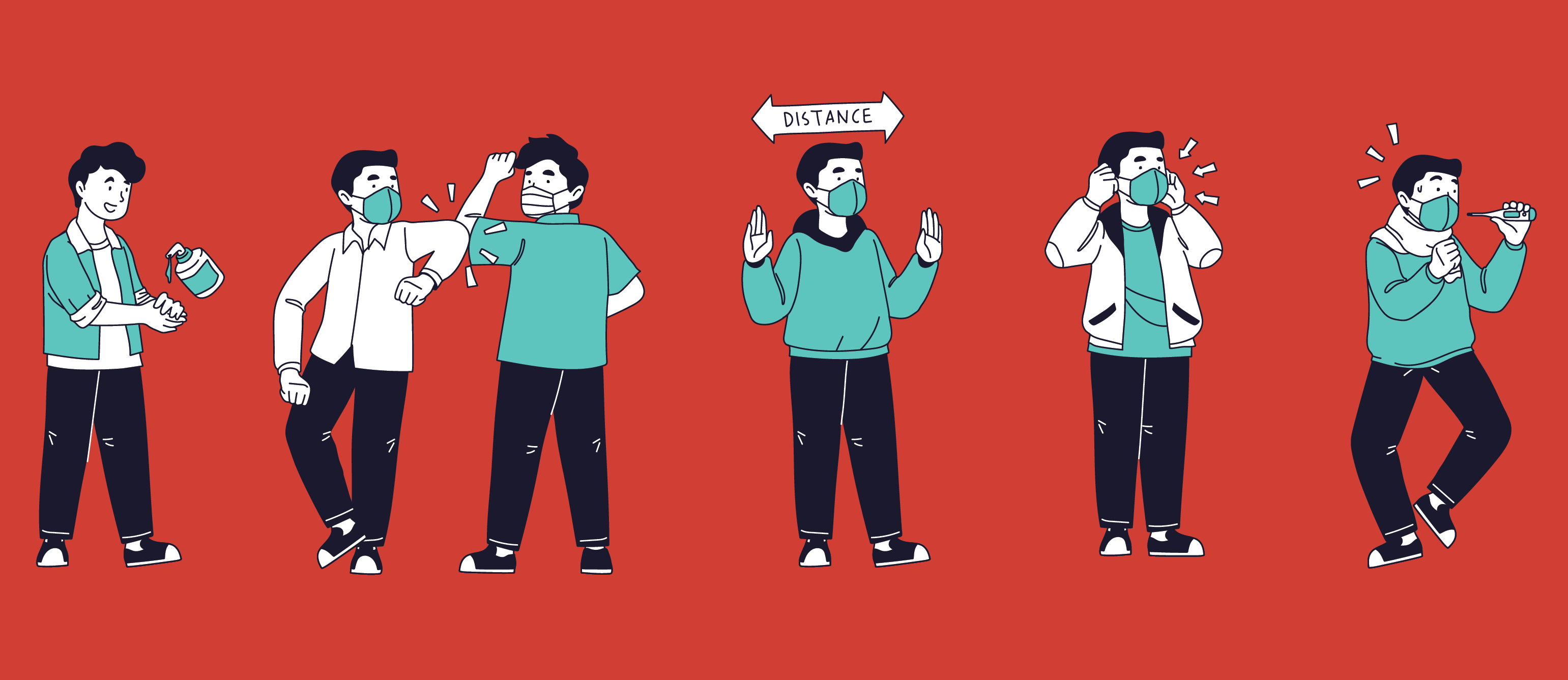
Graphic by Emily Wight.
With the various ways to get news today, readers are often left wondering if the information they learn online is true or just fake news.
News on social media and websites can be inaccurate and cause more confusion.
According to a study of digital news by the Reuters Institute for the Study of Journalism at Oxford University, “Those aged 18–24 (so-called Generation Z) have an even weaker connection with websites and apps and are more than twice as likely to prefer to access news via social media.”
Researchers at the Massachusetts Institute of Technology reported in a study involving Twitter that false news reached more people than the truth.
“Falsehood diffused significantly farther, faster, deeper, and more broadly than the truth in all categories of information,” the report states.
Test your knowledge on the fake news surrounding COVID-19 by determining what is fact and what is fiction below.
Fact
You can be positive for COVID-19 even if you don’t have any symptoms.
- A study published in Thorax, a respiratory medicine journal, found asymptomatic people had a comparable number of SARS-CoV-2 genes to symptomatic patients. Asymptomatic patients still test positive for COVID-19 and are just as likely to spread the virus as people with symptoms.
Masks can reduce the spread of COVID-19.
- According to a New York Times article, researchers have found “people wearing face coverings will take in fewer coronavirus particles, evidence suggests, making the disease less severe.”
- Since there are asymptomatic people, wearing a mask can prevent them from spreading the virus unknowingly and protect others from getting a serious infection.
- “Wearing a face covering doesn’t make people impervious to infection, but these trends of asymptomatic cases could suggest that masks lead to milder disease, potentially reducing hospitalizations and deaths,” the article states.
Age can affect COVID-19 mortality.
- With data from the National Center for Health Statistics, the CDC found that the rates of COVID-19 deaths in people 65 years or older were more than 90 times higher compared to the rates of those ages 18-29.
- Notably, the rates in people 85 years and older were 630 times higher.
- “In general, your risk of getting severely ill from COVID-19 increases as you get older,” the CDC website states. “In fact, 8 out of 10 COVID-19-related deaths reported in the United States have been among adults aged 65 years and older.”
Fiction
- You can’t get COVID-19 twice: While research is still ongoing, there have been reports of people getting infected more than once.
- An NBC news article states, “Although the exact length of immunity after COVID-19 infection is not yet determined, it is certainly possible re-infection may occur.”
- The article explains that similar to other coronaviruses, doctors have found antibodies that fight against future infection can fade within a few months.
Requiring face masks in businesses is infringing upon your rights.
- Businesses do have the right to enforce a mask-wearing policy for customers.
- “Think of the requirement to wear a mask as the same as banning smoking inside of a store,” attorney James Biscone told Business Insider in an article on the subject. “The patron has a right to smoke, but a business can restrict that right inside of its walls for the safety, comfort, and peace of mind of other people.”
- The Business Insider article states the exceptions to mask-wearing policies are children less than 2 years old and those with a disability preventing them from wearing a mask.
- “A mask situation is like the classic no shirt, no shoes, no service policy we see everywhere,” lawyer Aaron Goldstein said in the article.
There are no racial disparities in COVID-19 hospitalizations.
- The CDC discovered from data on COVID-19 hospitalization by race and ethnicity that Native American, Alaska Native, Asian, Black, African American, Hispanic and Latino people are all being hospitalized at rates significantly higher than white, non-Hispanic people.
- According to the CDC website, “Race and ethnicity are risk markers for other underlying conditions that impact health — including socioeconomic status, access to health care, and increased exposure to the virus due to occupation (e.g., frontline, essential, and critical infrastructure workers).”
People with Type O blood are less likely to get COVID-19 than people with other blood types.
- This rumor stems from the ongoing research being done connecting blood type and COVID-19 infection and hospitalization.
- In a Denmark study involving 7,400 positive COVID-19 cases, researchers at Odense University Hospital and the University of Southern Denmark found that the risk of being infected with COVID-19 falls by 13% for people with blood type O.
- Research in this area is ongoing and medical studies have concluded that more research is needed.
- The professor who led the study told Danish publication DR, “The difference is so small that everyone can get coronavirus and therefore all of us should still follow health authorities’ advice and guidelines regardless of blood type.”
- CNN reported on this study, stating, “While there are several theories, researchers don’t yet know what mechanism could explain the link between different blood groups and Covid-19.”
- The key understanding at this point is that medical researchers say the research is incomplete.
Animals are spreading COVID-19.
- According to the World Organisation for Animal Health website, “Although several animal species have been infected with SARS-CoV-2, these infections are not a driver of the COVID-19 pandemic; the pandemic is driven by human to human transmission.”
- The CDC website states the risk of animals spreading COVID-19 is low, but to treat your pet as you would a human in your household. This means social distancing and if you get sick avoid contact with your pet.
- In Utah, an outbreak of COVID-19 on a mink farm killed thousands of minks. According to an Associated Press article, “The COVID-19 infections likely were spread from worker to animals, with no sign so far that the animals are spreading it to humans.”
Want to read more? Follow us on Twitter and Facebook for daily articles and updates!



